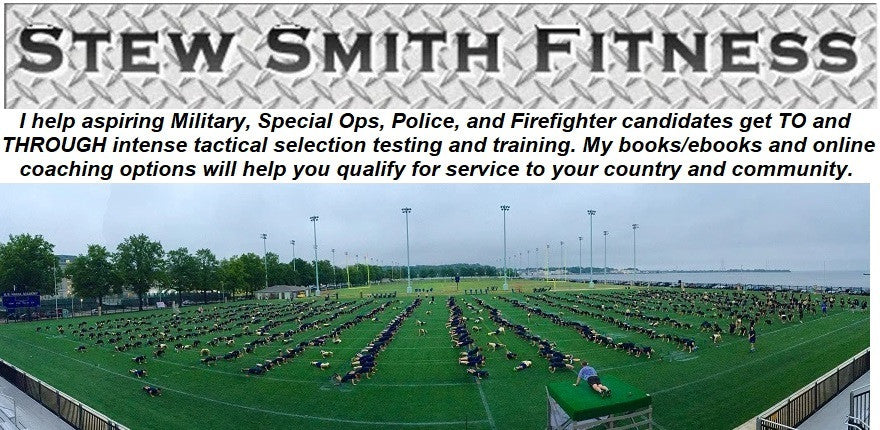There are several military swimming related tests most military members must be able to pass. Usually, these tests are either performed at the various military indoctrination training programs throughout the branches or in advanced training such as special forces.
However, in the Navy and Coast Guard the swim test is part of the physical testing members receive bi-annually usually 500m or 12:00 swim test.
First of all – when swimming – no matter who you are – you should never swim without a lifeguard or swim partner when training in the pool.
If you are having a tough time being comfortable in the water, the only way to get over this feeling is to practice being in the water. Start off treading water, holding your breathe for a few seconds underwater, and moving slowly with as little effort as possible. This will help you find your balance in the water. Most people do not balance themselves properly in the water and will struggle to swim one length. To learn balance watch swimmers swim past you for a while and if you need instruction, you can get it from most pools or even online at Total Immersion Swim training. (www.totalimmersion.net) These folks have swimming stroke drills for free and to purchase and can really help with long distance swims like the 500m.
One of the toughest swims I receive emails on a weekly basis is the underwater swim - especially from Navy SEAL and Air Force PJ candidates. When swimming underwater – once again – NEVER DO IT ALONE. There have been many people who were great swimmers die from shallow water blackout – defined at the Navy Safety Center as decreased oxygen levels leading to unconsciousness.
See related article - http://www.safetycenter.navy.mil/articles/shallowwater.htm
Before swimming underwater for the various underwater tests in the military, do not hyperventilate – take one big inhalation, one big exhalation, followed on last big inhalation. Doing this practice several times will be hyperventilating – DO NOT Hyperventilate! Limit inhales to ONLY two – then kick off the wall and glide as much as you can. The following pictures illustrate the process of efficiency when swimming underwater.
Streamlined kickoff – Glide – Double Arm Pull – glide
Kick and recover arms to glide position - REPEAT
The key is efficiency when swimming underwater. Glide as much as you can so you conserve oxygen and not waste it with 10-12 stroke and kicks in a 25m pool. When the glide in effectively used, you should be able to get across the pool in as little of 4-5 strokes.
Learn the Combat Swimmer Stroke if seeking Spec Ops type training
Good luck with your fitness goals. Remember the only way to get good at swimming is to practice swimming! Email your fitness questions to me at stew@stewsmith.com. I will answer them or use them as my article the following week.
